
- Generative AI - Home
- Generative AI Basics
- Generative AI Basics
- Generative AI Evolution
- ML and Generative AI
- Generative AI Models
- Discriminative vs Generative Models
- Types of Gen AI Models
- Probability Distribution
- Probability Density Functions
- Maximum Likelihood Estimation
- Generative AI Networks
- How GANs Work?
- GAN - Architecture
- Conditional GANs
- StyleGAN and CycleGAN
- Training a GAN
- GAN Applications
- Generative AI Transformer
- Transformers in Gen AI
- Architecture of Transformers in Gen AI
- Input Embeddings in Transformers
- Multi-Head Attention
- Positional Encoding
- Feed Forward Neural Network
- Residual Connections in Transformers
- Generative AI Autoencoders
- Autoencoders in Gen AI
- Autoencoders Types and Applications
- Implement Autoencoders Using Python
- Variational Autoencoders
- Generative AI and ChatGPT
- A Generative AI Model
- Generative AI Miscellaneous
- Gen AI for Manufacturing
- Gen AI for Developers
- Gen AI for Cybersecurity
- Gen AI for Software Testing
- Gen AI for Marketing
- Gen AI for Educators
- Gen AI for Healthcare
- Gen AI for Students
- Gen AI for Industry
- Gen AI for Movies
- Gen AI for Music
- Gen AI for Cooking
- Gen AI for Media
- Gen AI for Communications
- Gen AI for Photography
Generative AI for Software Testing
Generative AI tools are being used in software testing for accelerating test case generation and defect detection. Gen AI tools provide software testers with insights into the behavior of complex AI software and also they can help in automating the manual testing process.
This tutorial reviews some of the best modern AI tools for software testers. It includes real-world use cases and short examples to help users begin their journey to increased productivity.
ChatGPT: AI for Test Case Generation and Requirement Analysis
ChatGPT helps software testers by creating test cases, understanding the terms, and simulating potential user interactions. It is particularly useful for drafting test situations, analyzing testability requirements, and creating automated test scripts.
Benefits
- Speeds up the creation of test cases with detailed scenarios
- Generates test ideas based on various user perspectives
- Suggests uncommon test scenarios to support exploratory testing
- Automates the generation of code and scripts for test cases
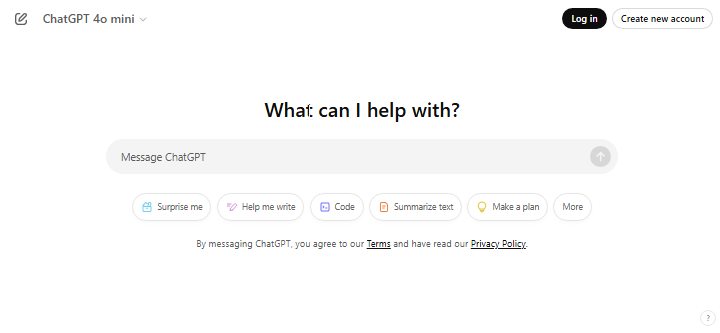
Test Case Generation
ChatGPT can draft test cases for various scenarios, from positive and negative test cases to boundary conditions.
Prompt − Generate test cases for a login page that requires email and password, includes a "Remember Me" option, and has a "Forgot Password" link.
Requirement Analysis
ChatGPT helps analyze requirements to identify areas that may require more testing or clarification.
Prompt − Identify possible ambiguities in this requirement: "The system must enable users to update their profiles, which include their name, email address, and profile picture."
Copilot (GitHub): AI for Code Completion and Automation Scripting
GitHub Copilot, an AI-driven tool, assists software testers with code completion, making it especially beneficial for test automation. It helps testers create test scripts more efficiently by generating relevant code snippets and offering suggestions for enhancements.
Benefits
- Accelerates the development of automation scripts
- Reduces syntax errors in test automation scripts
- Helps developers create efficient and reusable test code
- Supports various programming languages and test frameworks
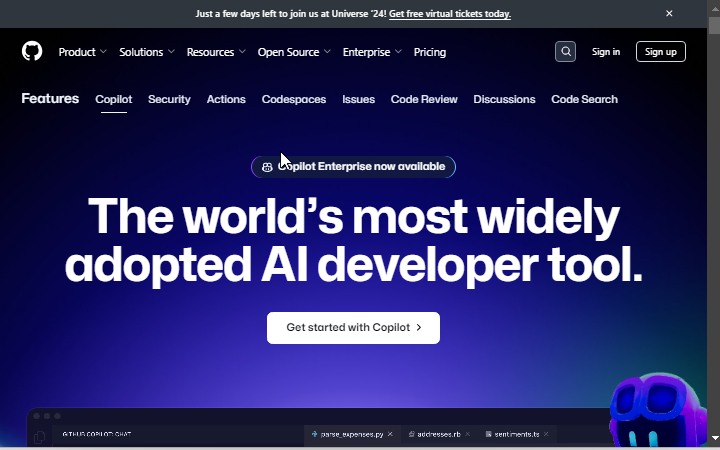
Automated Test Code Suggestions
Copilot can generate code snippets for automation tests, improving script consistency and reducing errors.
Prompt − Create a Python function utilizing Pytest to verify the output of a function that determines discounts on products.
Test Script Refactoring
Use Copilot to improve your current test scripts by introducing cleaner, more efficient code.
Prompt − Refactor this Selenium script to make it more efficient and remove hard-coded values.
Applitools: AI for Visual Testing
Applitools captures and compares screenshots of applications to detect visual discrepancies, effectively testing UI/UX, especially for responsive designs and cross-browser compatibility.
Benefits
- Detects visual discrepancies that traditional tests might miss.
- Ensures that UI remains consistent across different screen resolutions and devices.
- Reduces the manual effort required for visual testing.
- Integrates seamlessly with popular CI/CD tools and automation frameworks.
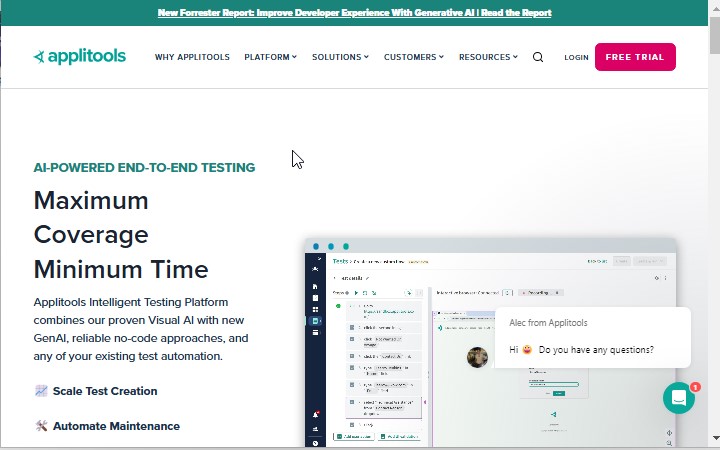
Cross-Browser Compatibility Testing
Applitools can compare UI elements across different browsers to ensure visual consistency.
Prompt − Generate a visual test that checks the alignment and positioning of buttons and text on the main page of a web app across Chrome, Firefox, and Safari.
Responsive Design Testing
Use Applitools to verify how different screen sizes, including mobile and tablet views, adjust a websites layout.
Prompt − Compare the layout of the homepage on desktop (1920x1080) and mobile (375x667) resolutions to identify any visual issues.
Testim: AI for Automated Test Case Creation and Maintenance
Testim, an AI-powered test automation tool, enables users to quickly create, execute, and maintain automated test cases. Its AI-based smart locators adapt to UI changes, which reduces test flakiness.
Benefits
- Automates the creation of test cases with minimal scripting
- Adapts to UI changes using AI-based smart locators
- Reduces the maintenance effort required for automated tests
- Supports faster execution and debugging processes
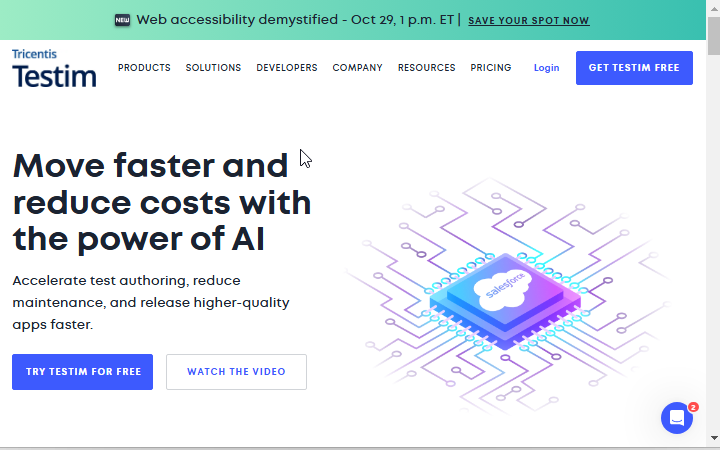
Automated Test Case Creation
Testim's AI recommends and generates test cases for typical user workflows, saving both time and effort.
Prompt − Solve this equation: Generate automated test cases for the checkout process on an e-commerce site, including adding items to the cart, providing payment information, and confirming an order.
Dynamic Element Handling
Use Testims AI-based locators to manage elements that frequently change in the UI, ensuring test stability.
Prompt − Write a test case that verifies the functionality of a frequently updated product search feature, ensuring it doesnt fail due to minor UI changes.
Snyk: AI for Security Testing and Vulnerability Detection
Snyk identifies and fixes vulnerabilities in code, open-source libraries, and containers to help with security testing. Testers focusing on security aspects use it to ensure applications are safe from potential threats.
Benefits
- The tool detects security vulnerabilities in code and libraries.
- It provides actionable recommendations for security patches.
- It integrates with CI/CD pipelines for continuous security monitoring.
- It supports multiple programming languages and environments.
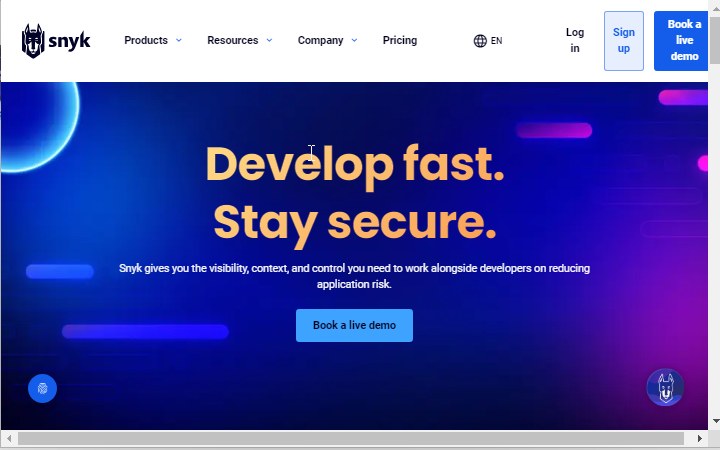
Automated Security Vulnerability Detection
Use Snyk to scan applications for known vulnerabilities in open-source libraries and frameworks.
Prompt − Examine a Node.js application for vulnerabilities in external libraries and recommend appropriate fixes or patches.
Container Security Testing
Test containers for security risks, ensuring that all components used in deployment are secure.
Prompt − Check for vulnerabilities in a Docker container used for deploying a web application and provide recommendations for secure configurations.
Mabl: AI for End-to-End Testing and Performance Monitoring
Mabl is a low-code, AI-driven testing tool that supports end-to-end testing with self-healing capabilities. Its effective for both functional and performance testing, ensuring that applications work as expected under different conditions.
Benefits
- AI-driven test creation simplifies end-to-end testing
- Self-healing tests adapt to UI changes
- The system supports performance monitoring and load testing.
- It integrates with CI/CD pipelines for continuous testing
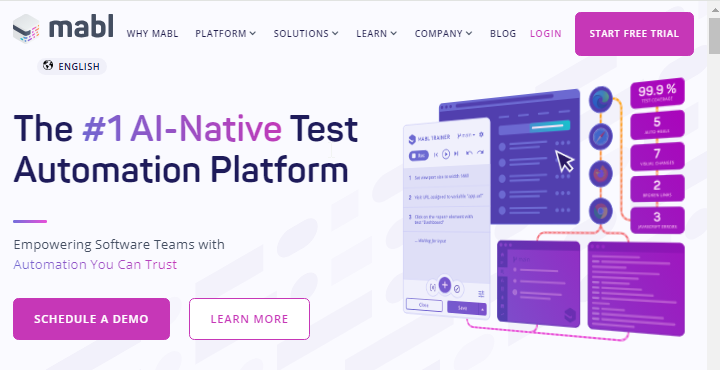
End-to-End User Flow Testing
Use Mabl to create tests that validate complete user journeys, including the login and checkout processes.
Prompt − Develop a comprehensive test case for a flight booking application that includes the processes of searching for flights, selecting seats, making a payment, and confirming the booking.
Performance Testing for High-Traffic Scenarios
Mabl can help simulate user loads to ensure application stability during peak times.
Prompt − Play a load test to simulate 1000 users making simultaneous purchases on an e-commerce platform and monitor the response time.
Conclusion
Generative AI tools like ChatGPT, GitHub Copilot, Applitools, Testim, Snyk, and Mabl offer software testers powerful features to simplify testing workflows, increase precision, and strengthen security measures. By utilizing these tools, testers can efficiently organize and oversee test cases, uncover vulnerabilities, and uphold rigorous quality standards in software releases. When used thoughtfully, these technologies can save time, lessen manual workloads, and deliver broader test coverage.